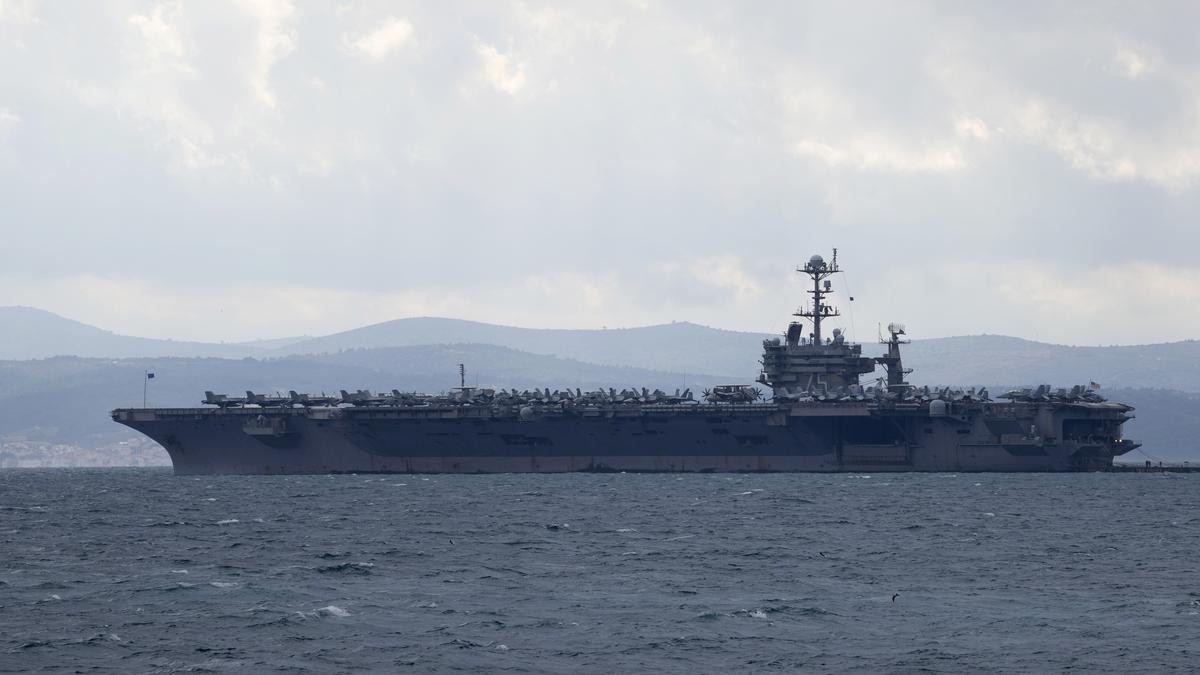Red Sea Friendly Fire Incident: US Navy Pilots Shot Down
In a shocking turn of events that has sent ripples throughout the military world, two U.S. Navy pilots were recently shot down over the Red Sea in what the U.S. military has described as a 'friendly fire' incident. This incident, occurring amidst the ongoing conflict in Yemen, has raised serious concerns about the safety of American troops operating in this volatile region. This incident has already been declared the most serious to threaten troops in the region in more than a year. Both pilots survived the incident with minor injuries for one of them. What could cause such a tragic accident? And what does this say about the dangers facing U.S. forces in the Red Sea? Read on to discover the truth behind the shocking incident and explore the perilous reality of this increasingly fraught area of operations.
The Shocking Details of the Friendly Fire Incident
The incident, which took place on Sunday, December 22, 2024, involved an F/A-18 fighter jet that was shot down by the guided missile cruiser USS Gettysburg. The Gettysburg, part of the USS Harry S. Truman Carrier Strike Group, mistakenly fired upon the fighter jet. The shocking revelation of the cause behind the accident immediately raised many eyebrows and led to serious questions being asked, considering the fact that warships and aircraft within a battle group are usually linked by both radar and radio communication, therefore reducing the risk of accidents like these. Despite the tragedy of the event, the pilots were successfully rescued alive with the assistance of rescue services, reducing the loss of life in what was undoubtedly a shocking moment.
The Perilous Red Sea Corridor
The Red Sea has become an increasingly dangerous zone. Ongoing attacks on shipping by the Iranian-backed Houthi rebels have turned the area into a hotbed of military activity. Despite the patrolling efforts of U.S. and European military coalitions, the risk of friendly fire incidents, as well as attacks from rebel forces remain significant. This highlights the difficult reality that despite the effort by various nations to ensure the safety of the area, its danger and unpredictability still remains, posing a direct and significant threat to vessels and aircraft which may pass through it. This is further complicated by the presence of active conflicts involving outside actors, creating an environment that could readily trigger misunderstandings.
The Role of the USS Harry S. Truman Carrier Strike Group
The USS Harry S. Truman Carrier Strike Group's presence in the region has increased the tension. The U.S. has stepped up its airstrikes targeting Houthi rebels and their missile fire. While intended to curtail Houthi activity, the increased military presence could potentially spark more attacks from the rebels, as we have already witnessed on several occasions with similar missions. This highlights the complex problem in such a conflicted region that even interventionist activities, despite being executed with good intent, can often lead to even more danger and risk to both the operators themselves as well as bystanders and potentially unintended actors. The situation demonstrates the challenges of balancing decisive action against unintended consequences.
The Bigger Picture: The Yemen Conflict and Beyond
The incident needs to be looked at against the backdrop of the broader conflict in Yemen, a nation gripped by civil war. This incident underscores the inherent risks faced by military personnel and forces acting in such dangerous zones around the world and therefore must serve as a reminder that precautions are never too much, given the unpredictable and dangerous conditions that come with this kind of work and environment. Furthermore, this incident serves as another reminder of the fact that modern warfare and technological advances present an equal and ever present risk, therefore necessitating continuous improvements to combat-related systems as well as systems in place to ensure security and minimise the loss of life.
Take Away Points
- The friendly fire incident highlights the complexities and dangers of military operations in volatile regions like the Red Sea.
- The ongoing conflict in Yemen contributes to the high-risk environment, creating many circumstances which have a high likelihood of causing misunderstandings which then end in disastrous results.
- Despite patrols by multinational coalitions, such as that made up of US and European military forces, the area continues to be dangerous for both vessels and aircraft passing through.
- The increase in military activity may inadvertently fuel further conflict. A more effective strategy is required to avoid causing additional unforeseen danger.
- Constant improvement and evaluation of technology as well as safety measures will be necessary to reduce incidents such as this in the future.




